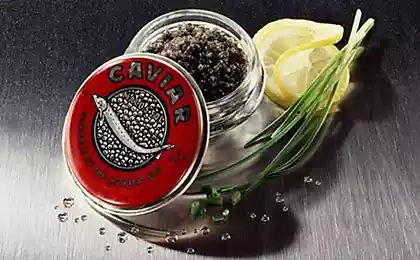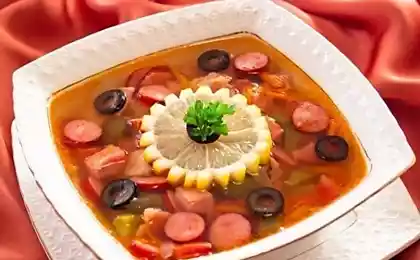710
15 Russian delicacies, which we have not heard
National Russian cuisine as something not to associate with sea urchins and young horse, but nevertheless real delicacies we have and can have. < Website publishes a selection of seemingly exotic, but nevertheless very domestic yummy!
1. Marine ezh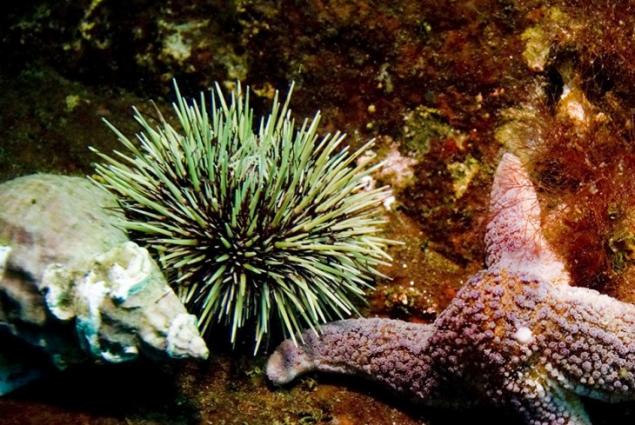
In the Baltic Sea urchins are rare, because the water is salty enough. On the palate, they are gentle, delicate, sweetish, with a characteristic touch of iodine. At urchins appreciated not only meat but also eggs and milt.
2. Wild Yakut zherebyatina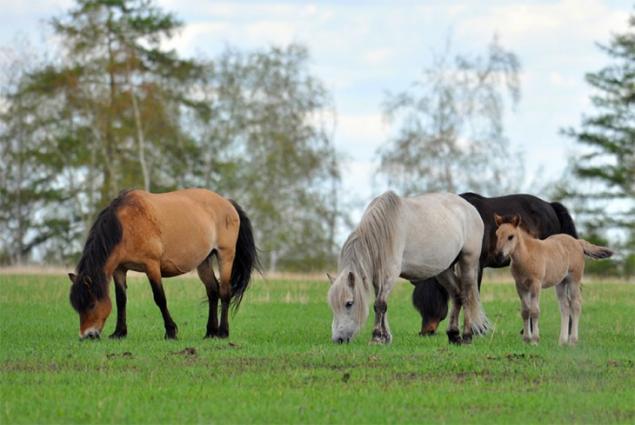
In Yakutia anciently eat horsemeat. And the locals prefer it to all other types of meat. To taste the meat of wild six-month northern foals, which are free-grazing, grain resembles veal, but consistency is softer and juicier, and yet did not smell of horse meat.
3. Murmansk grebeshok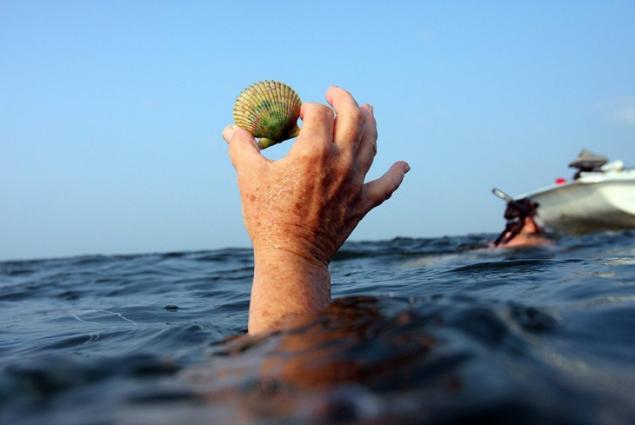
Bivalve with a beautiful fan-shaped shell lives in almost all the oceans. In the cold waters of the Barents Sea, he grows up to several centimeters. Considered one of the finest and most popular seafood. Scallop meat tender and juicy. It can have a raw or thermally treated. According to many chefs, this is the perfect gastronomic product of the highest quality.
4. Candy derevo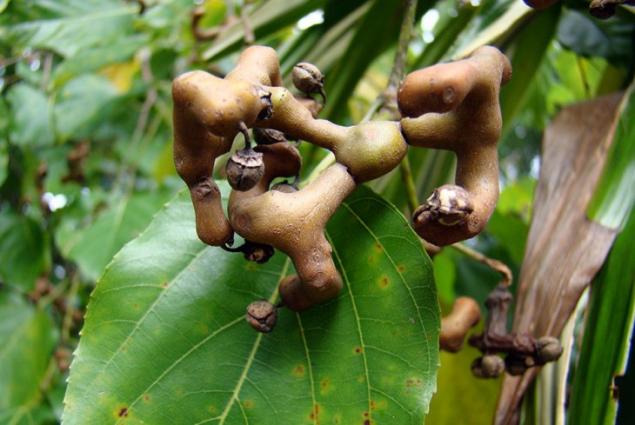
Candy tree native to Japan and China, and in Russia it is known at least since the XVII century. At one time it was grown in the metropolitan apothecary gardens on the orders of Tsar Alexei Mikhailovich, was used as a medicine and as a gastronomic delicacy. The name of the tree received through fleshy twigs, fruit stems, reminiscent of candy and the taste - raisins. They can be eaten fresh, it is possible to make the juice, cook the jam, candied cook.
5. Magadan trubach
Gastropod mollusk with a characteristic helical sink, living in the northern seas. A truly refined product. trumpeter Meat is rich in protein, fluorine, iodine, vitamin B, and is almost completely digested. The food is only "foot" clam.
6. Moose moloko
Today, this delicacy can only be found in one place - at the elk farm near the village of Sumarokovo near Kostroma. Here bred animals in the wild and keep them on a semi-wild grazing. But at a certain time animals come to the feeders. Fresh moose milk can be enjoyed on the farm from May to August, and throughout the year in a Moscow restaurant, where he served as a fudge.
7. Black Sea ustritsa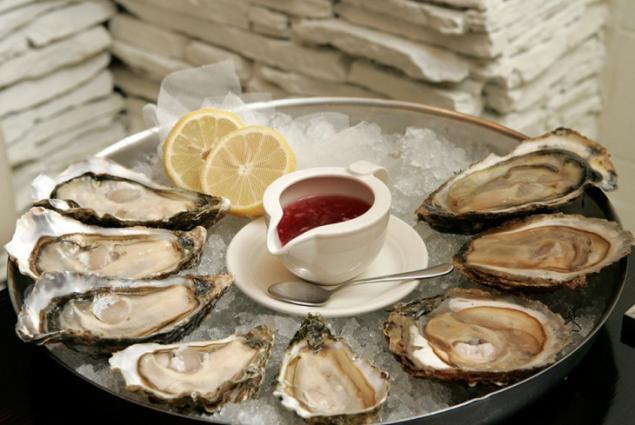
At the beginning of the last century Russia was one of the world's largest producers of oysters. Black Sea oysters specially delivered to Moscow and St. Petersburg to the table the most influential figures. However, in the following decades, the population has declined sharply due to the bad environment, swamping cans and expansion of predatory mollusc Rapana. Today, the Black Sea oyster once again begin to grow actively in special oyster farms. It is quite often found on the menu of good restaurants in the Black Sea.
8. Paporotnik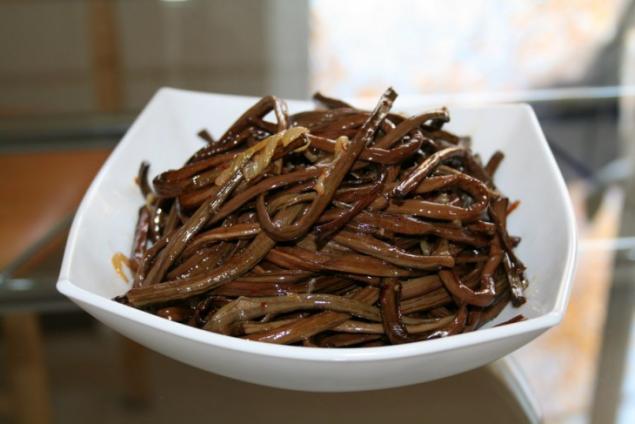
Fern is one of the oldest plants on earth and is traditionally used in the cuisines of different nations. It is boiled, fried, stewed, pickled, salted. Today fern begins dating in salads, but most often appears as a seasoning for meat, sometimes as an independent side dish.
9. Black Sea anchous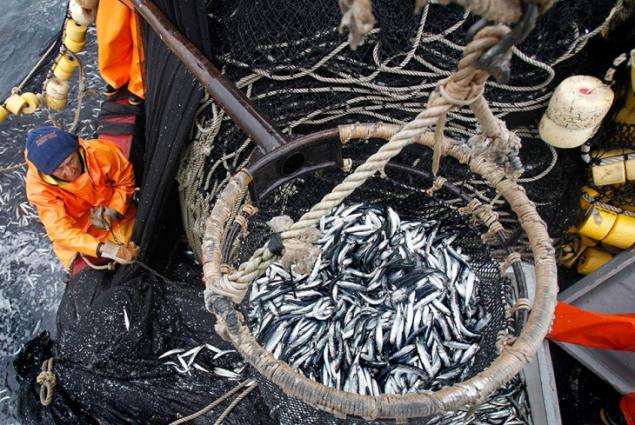
He anchovy, beloved residents of the Black Sea cities. A small and very tasty fish of about 12 centimeters long. In winter lives in the area of Novorossiysk and Tuapse, and also in the south-eastern coast of the Crimea. Good as an ingredient in a variety of salads and cold appetizers. In some metropolitan restaurants use it for a culinary version of "Dressed Herring" and as a seasoning for soups and red meat.
10. Deer moloko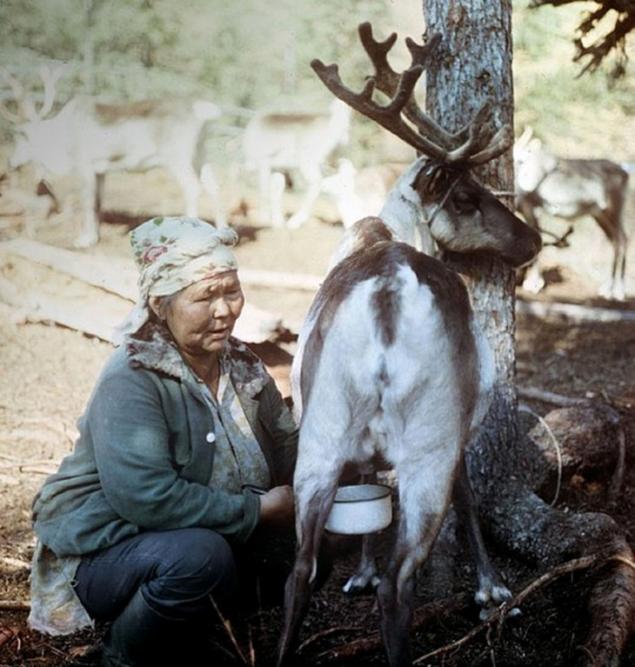
Reindeer milk is produced only in the northern regions, and until recently, beyond the Arctic Circle was almost unknown. Today, gradually improving its supply to other parts of the country. It is five times fatter cow and contains three times more protein. The consistency resembles cream, and taste a little bitter.
11. Zhimolost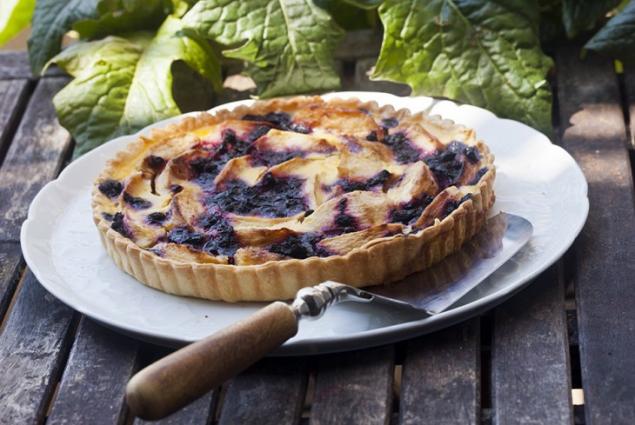
This plant can be found in a wide area stretching from Kaliningrad to Sakhalin. Edible species are found mainly in the northern latitudes. Honeysuckle gives dark purple berries oblong shape with a characteristic sweet-sour taste and a pronounced bitterness. The berries are used in dried, cooked and fresh, especially for desserts. From honeysuckle also make juice, mousses and jellies. However, while in restaurants honeysuckle meet infrequently.
12. Dagestan tur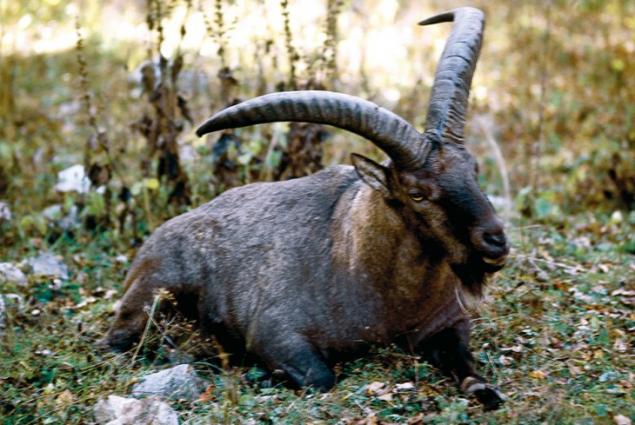
Powerful sharp-horned goat and a half meters long and up to a hundred kilos of weight resides in the Caucasus and is popular among local gourmets. But outside the region of the animal the meat until recently it was almost unknown. Now this delicacy can be enjoyed both in Moscow and in St. Petersburg, and Rostov.
13. Spruce shishki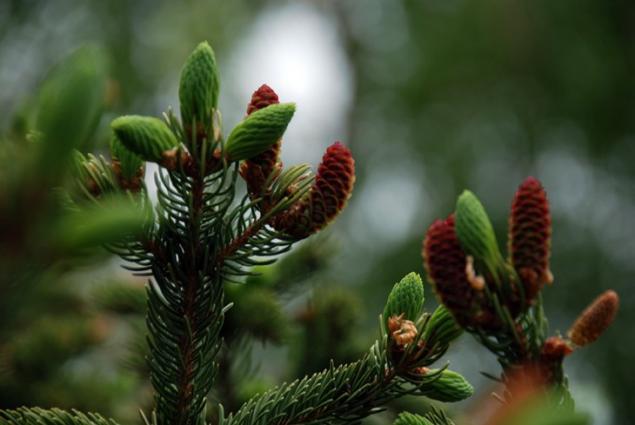
This product has long been well known in Siberia, but the element of haute cuisine began only recently. Cones are used for jam, which is served with cheeses and spreads, as well as an ingredient in various sauces that accompany the dishes of red meat, especially venison. In business there are very young, still soft fruits.
14. Russian Black tryufel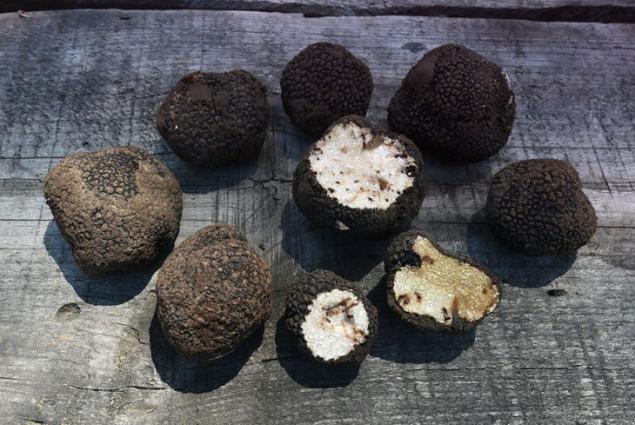
This gourmet fungus is often found on the Black Sea coast of the Caucasus, especially in forest-steppe Crimea. It grows up to 10 centimeters in diameter, has a yellowish-greyish flesh with a distinctive marbled pattern and features gentle, but very distinct sweet, nutty flavor. Today is actively reviving the tradition of hunting truffles. Not surprisingly, this fungus is more often found in the menu of the best Russian restaurants.
15. Archangel klykach
This powerful predatory fish is a distant relative of sea bass. It lives only in cold waters, and therefore differs dense, oily and fatty meat with a high content of omega-3, vitamins and trace elements. Undoubtedly, one of the most delicious food fish that live in our waters.
via bigpicture.ru/?p=666521
1. Marine ezh

In the Baltic Sea urchins are rare, because the water is salty enough. On the palate, they are gentle, delicate, sweetish, with a characteristic touch of iodine. At urchins appreciated not only meat but also eggs and milt.
2. Wild Yakut zherebyatina

In Yakutia anciently eat horsemeat. And the locals prefer it to all other types of meat. To taste the meat of wild six-month northern foals, which are free-grazing, grain resembles veal, but consistency is softer and juicier, and yet did not smell of horse meat.
3. Murmansk grebeshok

Bivalve with a beautiful fan-shaped shell lives in almost all the oceans. In the cold waters of the Barents Sea, he grows up to several centimeters. Considered one of the finest and most popular seafood. Scallop meat tender and juicy. It can have a raw or thermally treated. According to many chefs, this is the perfect gastronomic product of the highest quality.
4. Candy derevo

Candy tree native to Japan and China, and in Russia it is known at least since the XVII century. At one time it was grown in the metropolitan apothecary gardens on the orders of Tsar Alexei Mikhailovich, was used as a medicine and as a gastronomic delicacy. The name of the tree received through fleshy twigs, fruit stems, reminiscent of candy and the taste - raisins. They can be eaten fresh, it is possible to make the juice, cook the jam, candied cook.
5. Magadan trubach

Gastropod mollusk with a characteristic helical sink, living in the northern seas. A truly refined product. trumpeter Meat is rich in protein, fluorine, iodine, vitamin B, and is almost completely digested. The food is only "foot" clam.
6. Moose moloko

Today, this delicacy can only be found in one place - at the elk farm near the village of Sumarokovo near Kostroma. Here bred animals in the wild and keep them on a semi-wild grazing. But at a certain time animals come to the feeders. Fresh moose milk can be enjoyed on the farm from May to August, and throughout the year in a Moscow restaurant, where he served as a fudge.
7. Black Sea ustritsa

At the beginning of the last century Russia was one of the world's largest producers of oysters. Black Sea oysters specially delivered to Moscow and St. Petersburg to the table the most influential figures. However, in the following decades, the population has declined sharply due to the bad environment, swamping cans and expansion of predatory mollusc Rapana. Today, the Black Sea oyster once again begin to grow actively in special oyster farms. It is quite often found on the menu of good restaurants in the Black Sea.
8. Paporotnik

Fern is one of the oldest plants on earth and is traditionally used in the cuisines of different nations. It is boiled, fried, stewed, pickled, salted. Today fern begins dating in salads, but most often appears as a seasoning for meat, sometimes as an independent side dish.
9. Black Sea anchous

He anchovy, beloved residents of the Black Sea cities. A small and very tasty fish of about 12 centimeters long. In winter lives in the area of Novorossiysk and Tuapse, and also in the south-eastern coast of the Crimea. Good as an ingredient in a variety of salads and cold appetizers. In some metropolitan restaurants use it for a culinary version of "Dressed Herring" and as a seasoning for soups and red meat.
10. Deer moloko

Reindeer milk is produced only in the northern regions, and until recently, beyond the Arctic Circle was almost unknown. Today, gradually improving its supply to other parts of the country. It is five times fatter cow and contains three times more protein. The consistency resembles cream, and taste a little bitter.
11. Zhimolost

This plant can be found in a wide area stretching from Kaliningrad to Sakhalin. Edible species are found mainly in the northern latitudes. Honeysuckle gives dark purple berries oblong shape with a characteristic sweet-sour taste and a pronounced bitterness. The berries are used in dried, cooked and fresh, especially for desserts. From honeysuckle also make juice, mousses and jellies. However, while in restaurants honeysuckle meet infrequently.
12. Dagestan tur

Powerful sharp-horned goat and a half meters long and up to a hundred kilos of weight resides in the Caucasus and is popular among local gourmets. But outside the region of the animal the meat until recently it was almost unknown. Now this delicacy can be enjoyed both in Moscow and in St. Petersburg, and Rostov.
13. Spruce shishki

This product has long been well known in Siberia, but the element of haute cuisine began only recently. Cones are used for jam, which is served with cheeses and spreads, as well as an ingredient in various sauces that accompany the dishes of red meat, especially venison. In business there are very young, still soft fruits.
14. Russian Black tryufel

This gourmet fungus is often found on the Black Sea coast of the Caucasus, especially in forest-steppe Crimea. It grows up to 10 centimeters in diameter, has a yellowish-greyish flesh with a distinctive marbled pattern and features gentle, but very distinct sweet, nutty flavor. Today is actively reviving the tradition of hunting truffles. Not surprisingly, this fungus is more often found in the menu of the best Russian restaurants.
15. Archangel klykach

This powerful predatory fish is a distant relative of sea bass. It lives only in cold waters, and therefore differs dense, oily and fatty meat with a high content of omega-3, vitamins and trace elements. Undoubtedly, one of the most delicious food fish that live in our waters.
via bigpicture.ru/?p=666521
Optical illusions Eric Johansson: 10 fascinating paintings
Already captures the spirit 12 of the probability of facts proving that math is incredibly interesting!





